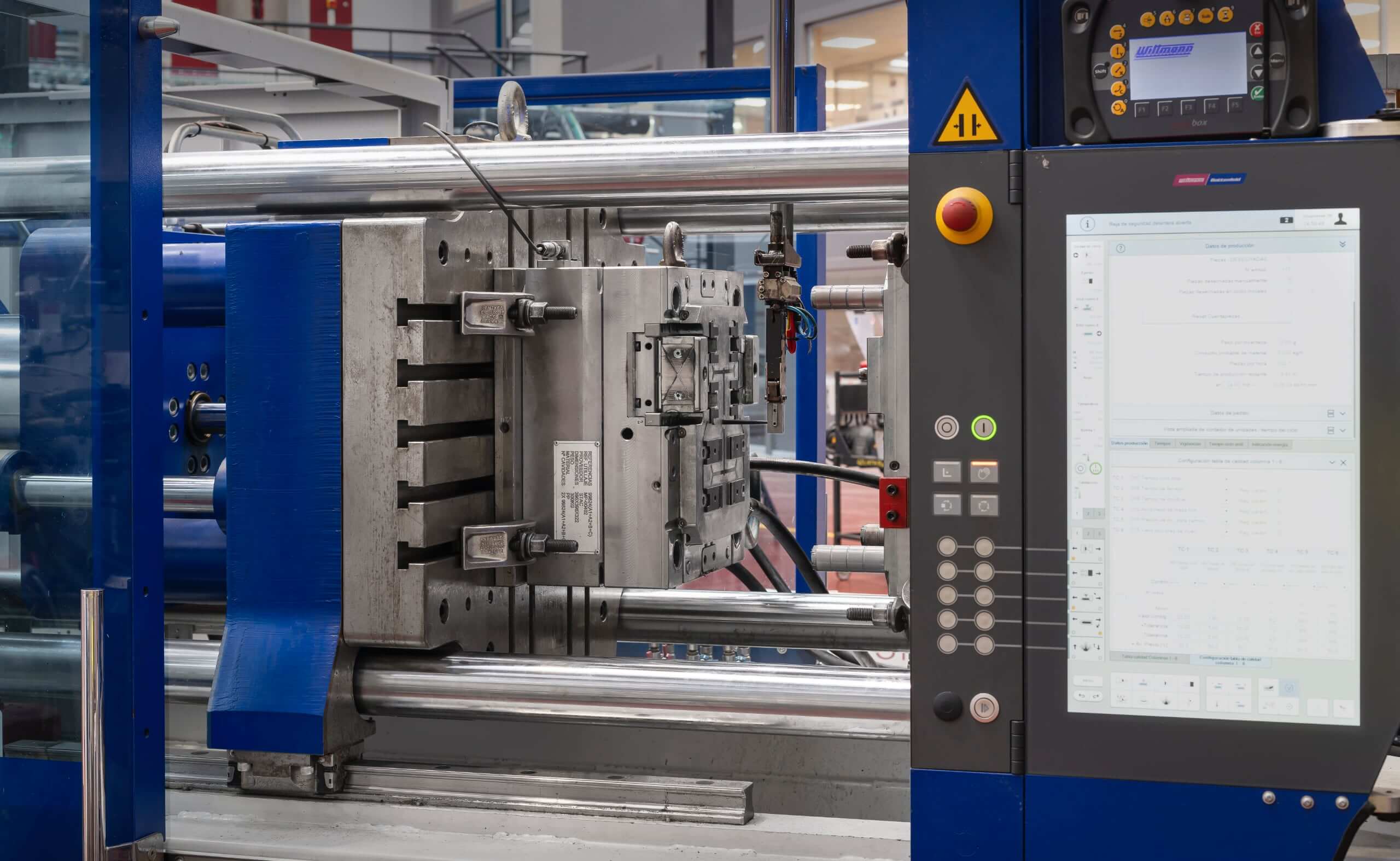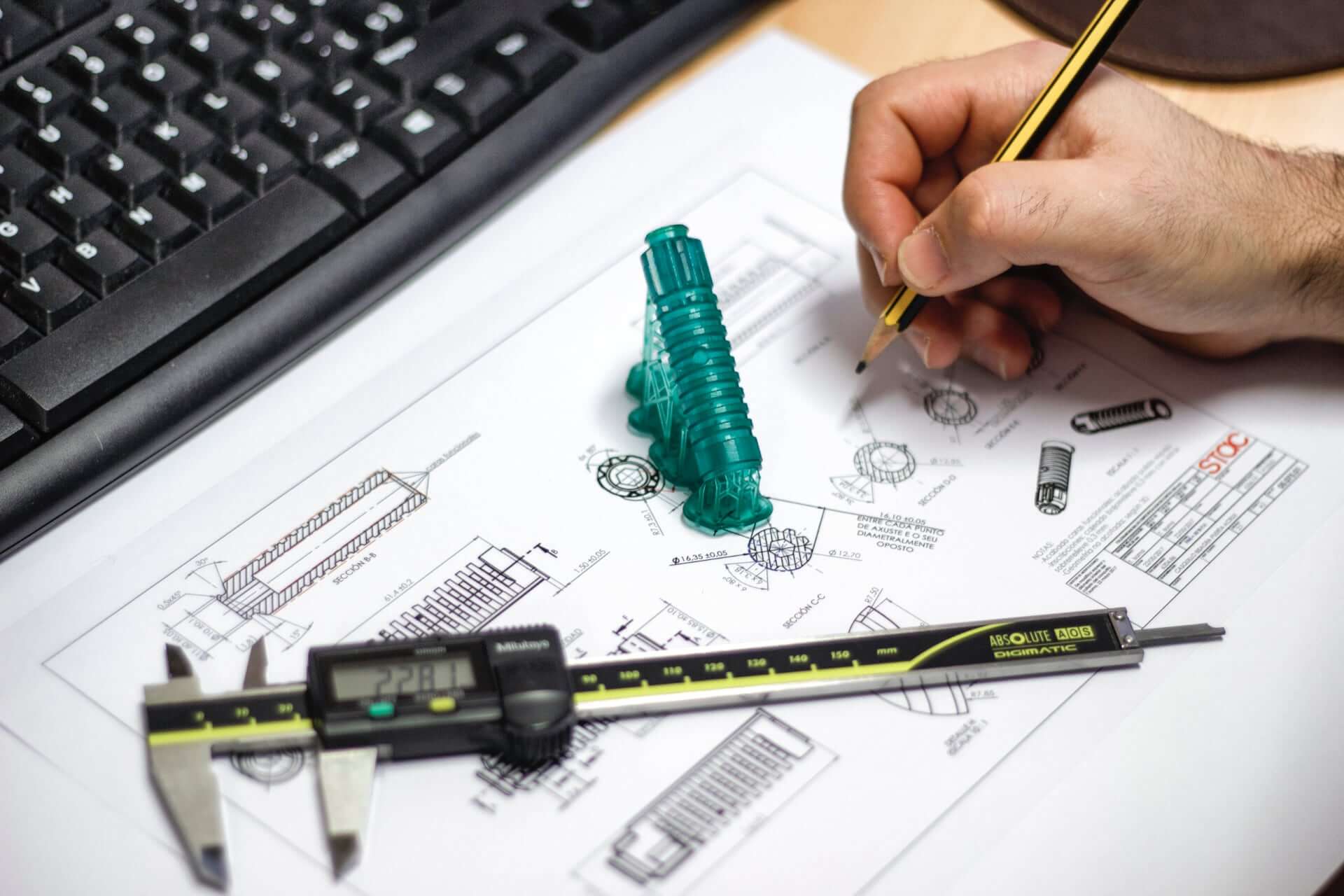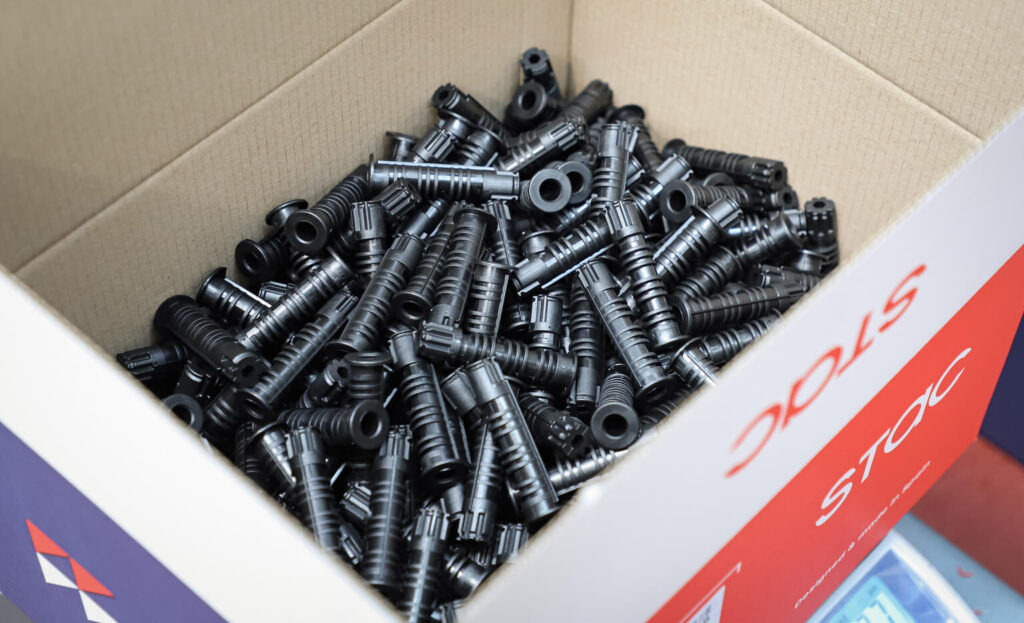
PRIMARY PROCESSES
Plastic injection
At STAC we are specialists in the manufacture of plastic injection parts and we assist our customers to develop their initial idea into a product that is manufactured in series.
What is plastic Injection?
The plastic injection manufacturing process is one of the best known and applied in multiple sectors for the manufacture of all kinds of parts.
The main stages of the plastic injection process are:
- Part design.
- Mould design: A mould design is created that determines the shape and characteristics of the plastic part to be manufactured. The mould is composed of two parts: one half for the core and the other half for the cavity.
- Preparation of the material: Selecting the appropriate plastic type for the part which comes in the form of pellets or granules. The plastic is melted and heated to a specific temperature for processing.
- Injection: The molten plastic is injected into the mould by the injection moulding machine. The machine consists of a screw that pushes the molten plastic forward and injects it at high pressure into the mould. The plastic flows and fills the mould cavity.
- Cooling: After injection, the plastic is cooled inside the mould to solidify and take on the desired shape. Cooling time may vary depending on the size and thickness of the part.
- mould opening: Once the plastic has cooled and solidified, the mould is opened and the moulded part is ejected or removed.
Do you want to know how?

Advantages of plastic injection manufacturing
The plastic injection process offers many advantages when manufacturing a product in series:
- A wide variety of applications.
- Precision and detail: Enables the production of plastic parts with high precision and detail, making them suitable for technical and precision components.
- Production efficiency: Plastic injection is an efficient production method. That is, lower production costs and faster delivery times.
- Versatile design: Design flexibility allows us to create complex shapes that adapt to the function we want the product to perform.
- Replacement of traditional materials: Replacement of metals, offering advantages such as lower weight, higher corrosion resistance and lower cost.
- Advances in plastic materials: The development of new plastic materials with improved properties opens up opportunities for the creation of plastic injection parts with specific characteristics, such as increased strength, heat resistance or self-lubricating properties.
- Trend toward customization: Plastic injection parts can easily adapt to specific requirements and offer tailor-made solutions.



Frequently asked questions about plastic injection
To answer this question we have to first define the following main characteristics:
- Functional requirements: The customer must be clear about the functions that the part is expected to fulfill. Will it have to bear heavy loads? Does it need chemical or thermal resistance? Should it be rigid or flexible?
- Mechanical properties: The mechanical properties of the material, such as strength, rigidity, toughness and elongation, must be considered according to the demands of the application. For example, if a high strength is required, you could opt for a fibreglass reinforced plastic.
- Thermal properties: Depending on the temperature conditions to which the part will be exposed, it is necessary to consider the thermal properties of the material. There are plastics that can withstand high temperatures, while others have lower limits.
- Chemical resistance: If the part will be in contact with chemicals, it is important to consider the chemical resistance of the material. Some plastics are more resistant to certain chemicals than others, so a material compatible with the chemical environment must be selected.
- Dimensional stability: If dimensional accuracy is critical for the part, the dimensional stability of the material should be considered. Some plastics may experience deformations or dimensional changes during the manufacturing process or under certain environmental conditions.
- Cost: The customer should take into account the cost of the material in relation to their budget and quality expectations. Some materials are more expensive than others, but they can also offer superior features.
- Aesthetic considerations: If the visual appearance of the part is important, such as in consumer products or product design, the options of surface finish, transparency or colour of the material should be considered.
Yes, there are many questions, but we can help you answer them.
At STAC we work with more than 150 different injection materials every year and many of them are adapted to have characteristics which cover very specific requirements, but let’s talk a little about the most common groups.
- Polyamides: High mechanical and wear resistance, good chemical resistance. Common applications: gears, bearings, auto parts and technical industrial parts.
- Polyamide 6.6: Excellent mechanical and thermal resistance, good dimensional stability. Common applications: Automotive components and structural parts.
- Acetals: High rigidity, low friction, good wear resistance. Common applications: Gears, bearings and auto parts.
- Polypropylenes: Low density, high chemical and impact resistance, flexible. Common applications: Packaging, tubing, toys.
- ABS: Good impact resistance, rigidity and toughness, easy to process. Common applications: Housings of domestic appliances, toys and components.
As in the rest of the injection processes, the mould is of vital importance for the correct manufacture of our customers’ parts.
There are many aspects to consider:
- Design of the part, paying special importance to the plane of the parting line.
- Choice of suitable materials depending on the material to be injected and depending on the number of parts that have to be machined with tooling.
- Redesign parts to adapt them to a more robust and reliable injection process.
- Injection and mould adjustment tests following tests on the first samples.
The tooling has to be adapted to the client’s project, it has to be adjusted in cost to the annual turnover volume of the parts and above all it should not be the customer’s responsibility.
STAC is responsible for the mould and the correct manufacture of plastic parts throughout the production life of the project.
If, for example, the mould breaks or has any problem, we replace it at no cost to our customers.
If you want to know more about this point, we’d be happy to help you. Contact us.
Plastic Injection machinery
They are very important in the plastic injection process, so our machines are state-of-the-art and we have peripheral equipment that help to ensure a more controlled process with more stability and repeatability which allows us to offer several significant advantages.

At STAC, we want to be your comprehensive supplier of plastic injection parts.
We take complete control over the entire process and therefore take responsibility for its entirety.
Our priority is to help the customer achieve their goals
At STAC, we are committed to excellence and customer satisfaction.
We are ready to work closely with you and meet your specific requirements.
Put an end to moving the pieces between different suppliers.
Don’t hesitate to contact us to discuss your projects and how we can help you achieve your goals.

Post-plastic Injection processes
Most of the plastic parts we manufacture for industrial sectors do not require secondary operations. But in some cases, the project requires it.
They are additional value-added services that STAC has implemented in the factory, so you don’t have to worry about anything but receiving the parts you need from a single supplier.
Contact us
We’ll be happy to provide help for your projects and resolve any doubts as soon as possible